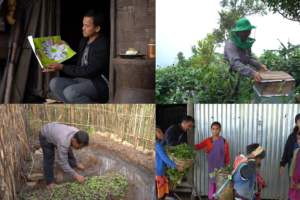When the grass looks greener on the other side, it is not only hard to resist, but it can also make life easier when we reach it.
Human migration is a trend that can be traced back 2 million years in history. As of 2015, the international migration rate has reached 244 million.
So migration has been an ongoing activity for since time immemorial, but it has grown to higher numbers than ever before in the past two years. The human population on the planet is also larger than ever before, but there is a confluence of several factors at work today to explain these numbers.
In the Old Stone Age, people migrated in search of food because they were hunter-gatherers— food consumers but not producers. When farming was developed, humans learned to grow their own food and that allowed them to settle in a particular place.
But if humans now know the art of producing food, why do we still migrate?
The reasons for migration in today’s era are more likely due to economic, social, political or environmental challenges. Rural poverty, food insecurity, environmental degradation, poor income- generating opportunities, inequality and many other factors create the need for migration for an individual or family. Migrants may see opportunities to make a living in other countries or in urban areas within a country because of the increase in demand for workers and the better facilities that are available. And when they have access to better food, availability of infrastructure, sustainable utilization of resources and a stabilized environment, they may want to forever call it home. There are also the refugees who are running away from conflicts and persecution happening their countries
But when we think about it, at the end of the day, it all comes down to the search for better food to be able to sustain, better life and most importantly to attain peace of mind.
It is important to look closely into the matter of migration to avoid overpopulation and overcrowding in a particular area. Most importantly, if the population of the food-growing community decreases with time, it will become impossible for the supply of food to meet the demand.
Roger Tuckledoe from the Ministry of Agriculture South Africa stressed “Access, availability, utility, and stability” as the key contributors for curbing migration. Many rural areas lack employment or entrepreneurial opportunities. Even families whose forefathers have been farming for many generations tend to explore other possibilities for earning livelihoods in careers besides agriculture. Governments and policy makers need to look and understand the core contributions at the ground level. It is the need of the hour to convince the food-growing communities to continue and carry forward in their roles as food producers.
“Migration should be a choice and not a necessity,” says Elisenda Estruch. But when people’s own birthplace becomes a difficult place to live in, it then becomes a necessity for them to move.
More than 45% of the total world population lives in rural areas. It is the responsibility of those in positions of power to provide better opportunities in these rural areas. To afford the opportunity to defend and maintain the food system, to achieve a secure livelihood through food production as farmers, beekeepers, and other rural livelihood opportunities. They need better solutions to help produce food, especially considering the many challenges that a farmer is more likely to face. That is why Guido Santini, FAO, suggested the need for a paradigm shift: a move towards more sustainable food production practices for rural communities so that they can be self-dependent and content.
“Helping them at home” is the need of the hour.





